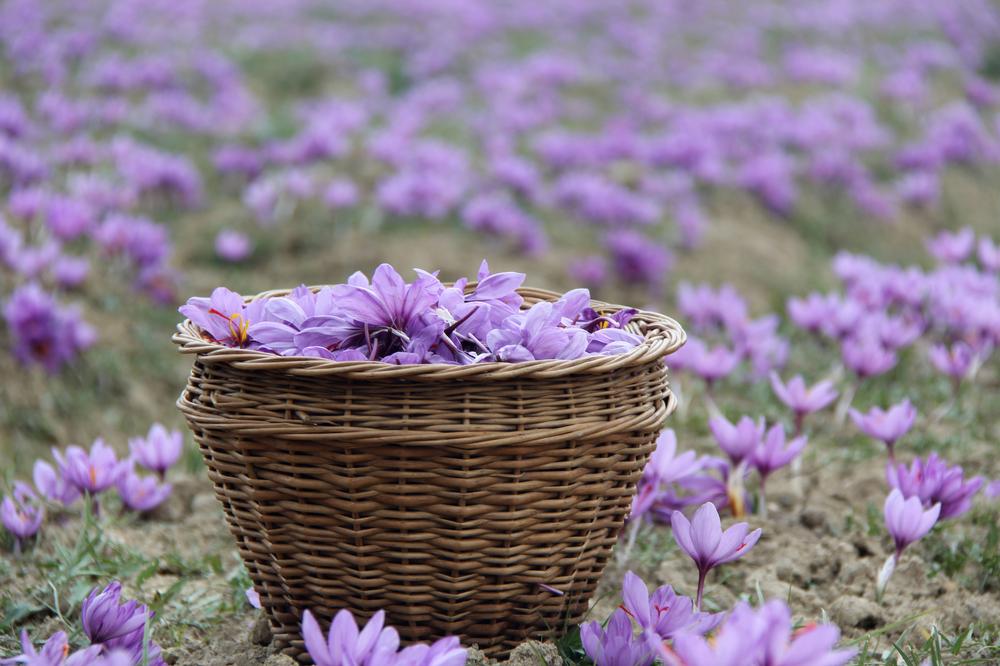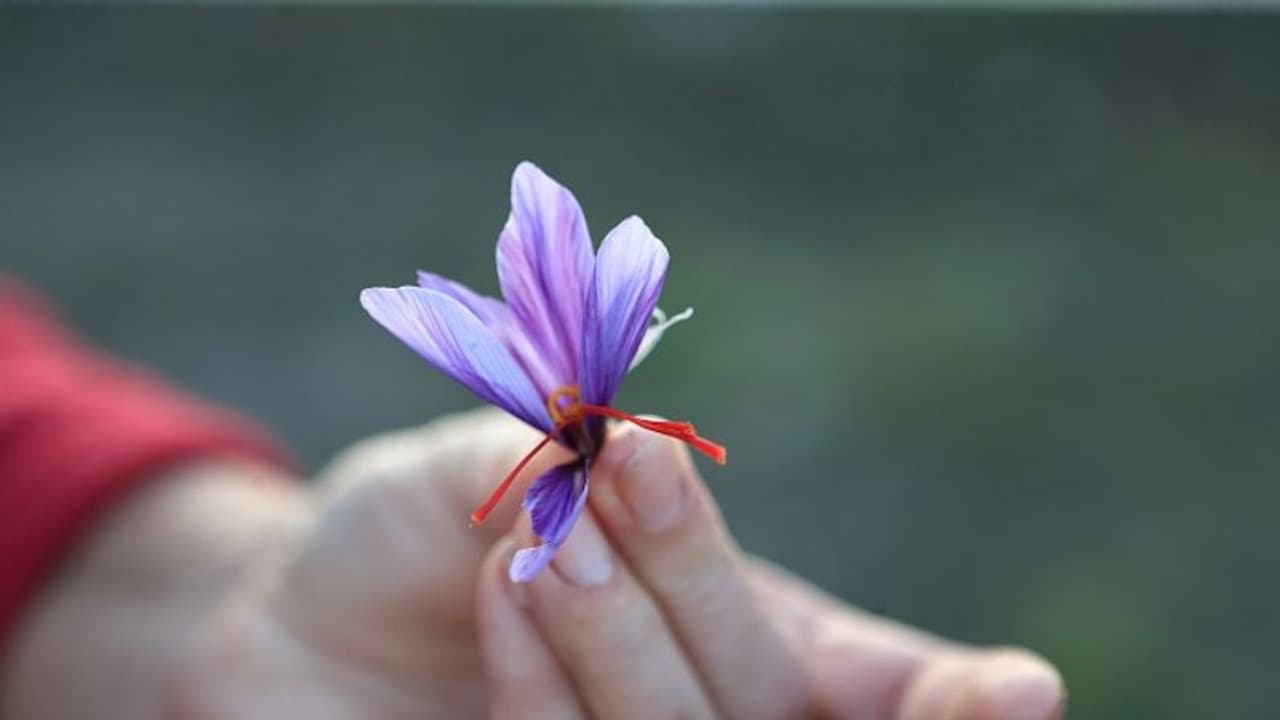Just like the state animal, Hangul deer, the saffron production in Kashmir is dipping dangerously low. Here's what can be done
Call it Kesar, Zafran or Kong Posh, saffron by any other name would smell as sweet. Even though the world’s most expensive spice is produced in greater numbers in regions such as Iran, Indian saffron grown in Kashmir with its distinguishing feature of long stigmas with thick heads makes it ‘World’s Best Saffron.’
When Kesar met Kashmir in 500 B.C.
How and when this red gold made its way in India is just like folklore with many versions. According to Kashmiri legends, two Sufi ascetics introduced the spice to the valley, a naturally perfect place for the cultivation of this temperamental spice. Meanwhile, some chronicles credit the Persian rulers for bringing saffron to India around 500 B.C.
However, saffron has featured heavily even in the prescriptions of Ayurveda practitioner Vagbhata and father of surgery, Indian physician Sushruta during about 500 B.C as well as found a mention in author Kalhana’s Rajatarangini that saffron was under cultivation in Kashmir even before the regime of Lalitaditya Muktapida during the 12th century.
Even today, if you drive through Kashmir during pre-autumnal weather you can see the land dotted with gorgeous purple flowers in the backdrop of the yellow-red maple leaves. Not just an important ingredient in the elaborate wazwan and the kahwatea, kesar is an important piece of cultural heritage that is slowly fading just like the state’s animal, Hangul.

Here's why Kesar Kingdom is on a fast decline
In spite of the rich history, India’s Kesar kingdom is facing a putsch of sorts with the combined forces of climate change and lack of modern methods of farming. According to research by Agropedia, “Marketing is also one of the main problems. An average saffron grower finds it troublesome to sell the small quantity of his produce. The grading and packing individually are not highly profitable.“
The ambitious National Saffron Mission, initiated in 2010, to revive the traditional saffron cultivation has failed miserably. Mostly because the farmers did not receive the promised irrigational support and unabated construction in the area despite the Saffron Act, 2007.
As per the agriculture ministry data, the saffron output is set to drop by almost 69% in the 2017-18 crop year.

In one of the most militarized region in the world, with the youth preferring to pick up arms or stones rather than saffron seeds, the tradition of saffron-farming has taken a backseat.
The knowledge of kesar farming was traditionally passed down from generation to generation in which the Kashmiri women play an important part especially since they carry out the important task of picking and drying the flowers. Once dried, tossed and sorted, the flowers are handed over to the men, who strip away the insides of the flowers, grade it and pack them in moisture-proof containers.

What can be done...
Did you know one-kilogram saffron consists of around one lakh sixty thousand to one lakh seventy thousand tiny flowers? Yes, it is red gold indeed. The declined produce is expected to spike the prices too. So far, one-kilogram of pure saffron or kesar is currently selling for Rs.250,000-Rs.270,000 in the domestic market. So, what can be done?
- For starters, the cultivation and production need to be expanded with the proper introduction of modern equipment such as solar drier, irrigations apparatus etc. More importantly, the cultivators must be educated about how to use them.
- The low produce is the result of a chain of events. The floods in 2014 damaged the crop and the ensuing drought damaged the quality of the soil. As a result, the bulbs growing after the events are diseased. This issue can be sorted by providing high-quality seeds and bulbs to the farmers.
- Saffron cultivation in some villages are particularly affected by certain diseases such as corm rot and proper research can save many tonnes of produce from going waste.

India's very own truffle
Four-time Michelin-starred chef Vikas Khanna places saffron on the same extravagance scale as the French truffles. In fact, he even prepared sandalwood saffron sherbet during PM Modi’s organic dinner with Fortune 500 CEOs in 2015.
He says, “If I wasn’t a chef, I would be a farmer. It’s the profession that keeps us closest to Mother Earth and love for our life through food.”

